One of the more interesting things I’ve seen at the Aircraft Interior Expo is the double-decker seat concept by a Spanish startup called Chaise Longue. The product has been reported on at length, and its premise is simple: since vertical space inside aircraft cabins is mostly unused, staggering seats vertically unlocks previously underutilized space.
The internet’s response, by and large, has been very negative. Here are a few particularly good ones:
- “The people up high can bomb farts straight to the other’s face.”
- “They could fit WAY more passengers in than that if they just arranged them horizontally and stacked them up like cordwood.”
- “As if being on a plane isn’t miserable enough already.”
Having sat in these seats, however, I’ve come to a surprising conclusion: they’re absolutely fantastic and I hope they make it into the sky. Here’s why.
A quick primer
This design comprises two levels of economy class seats, stacked diagonally over each other. To accommodate the upper row, overhead bins will need to be omitted, similar to what’s done in many business class cabins.
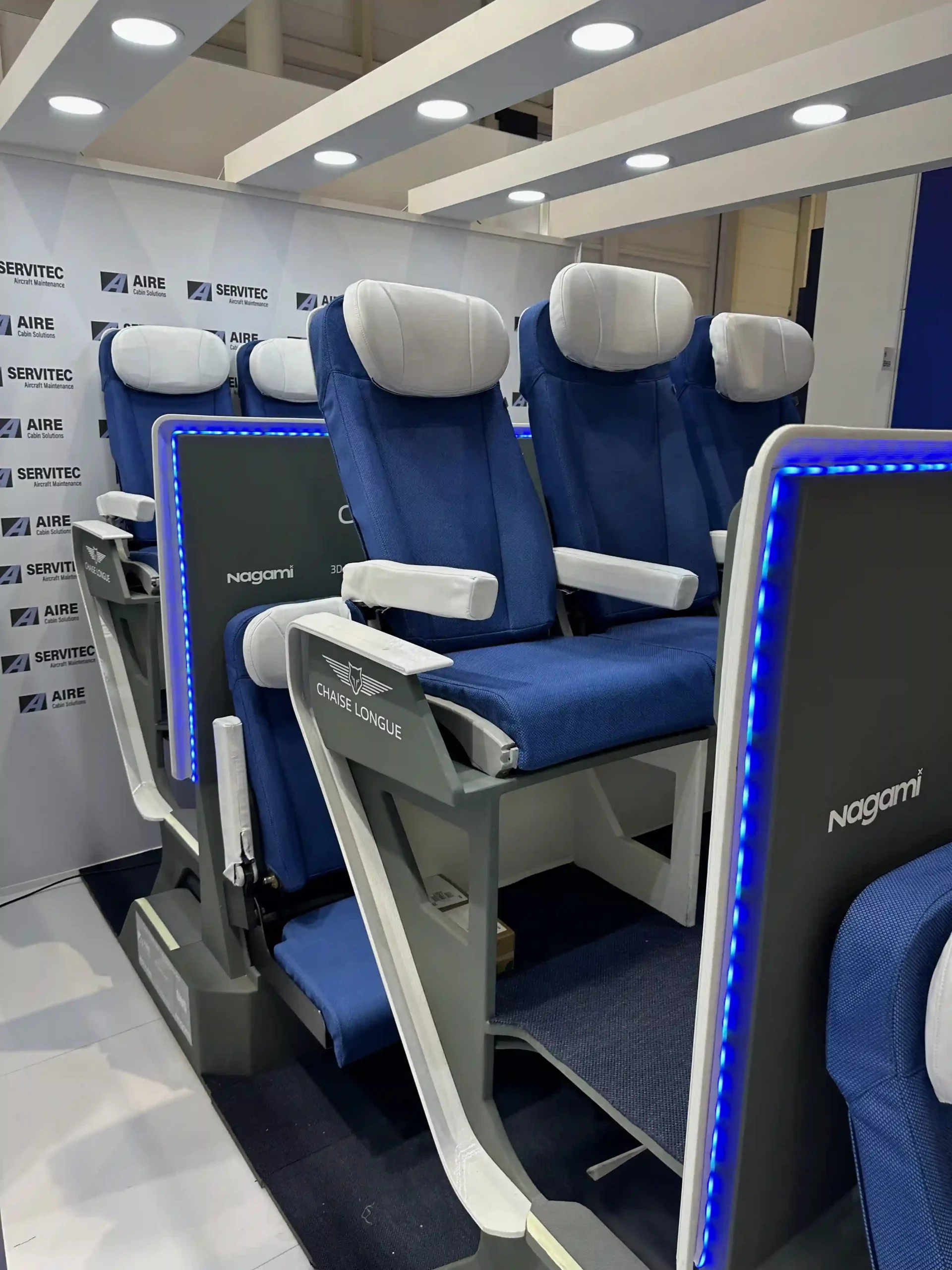
The seats are a concept developed by a tiny Madrid-based company (they’ve got just four full-time employees!) called Chaise Longue. Not yet safety-certified, the product is at least three years away from entering the market.
Video and pictures
To give you a better sense of these seats, I’ve taken pictures and a video of the latest demo version currently displayed in Hamburg.
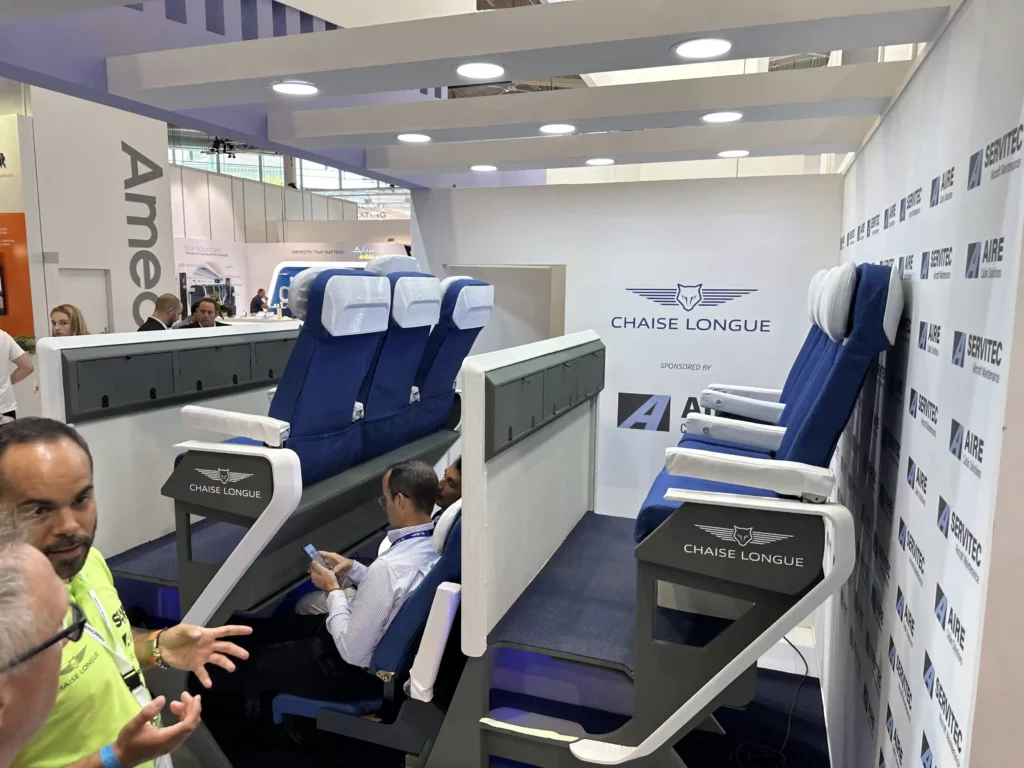
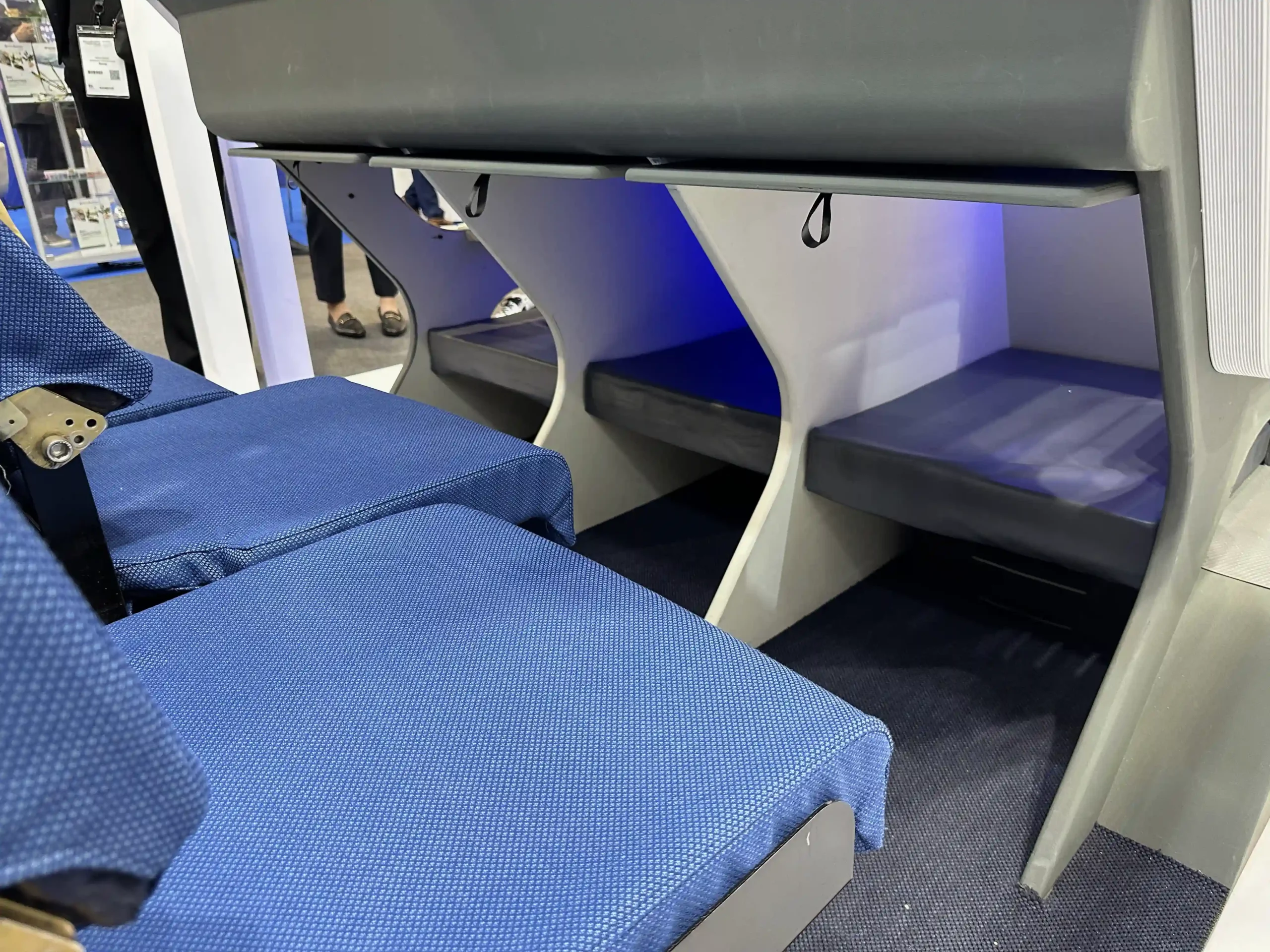
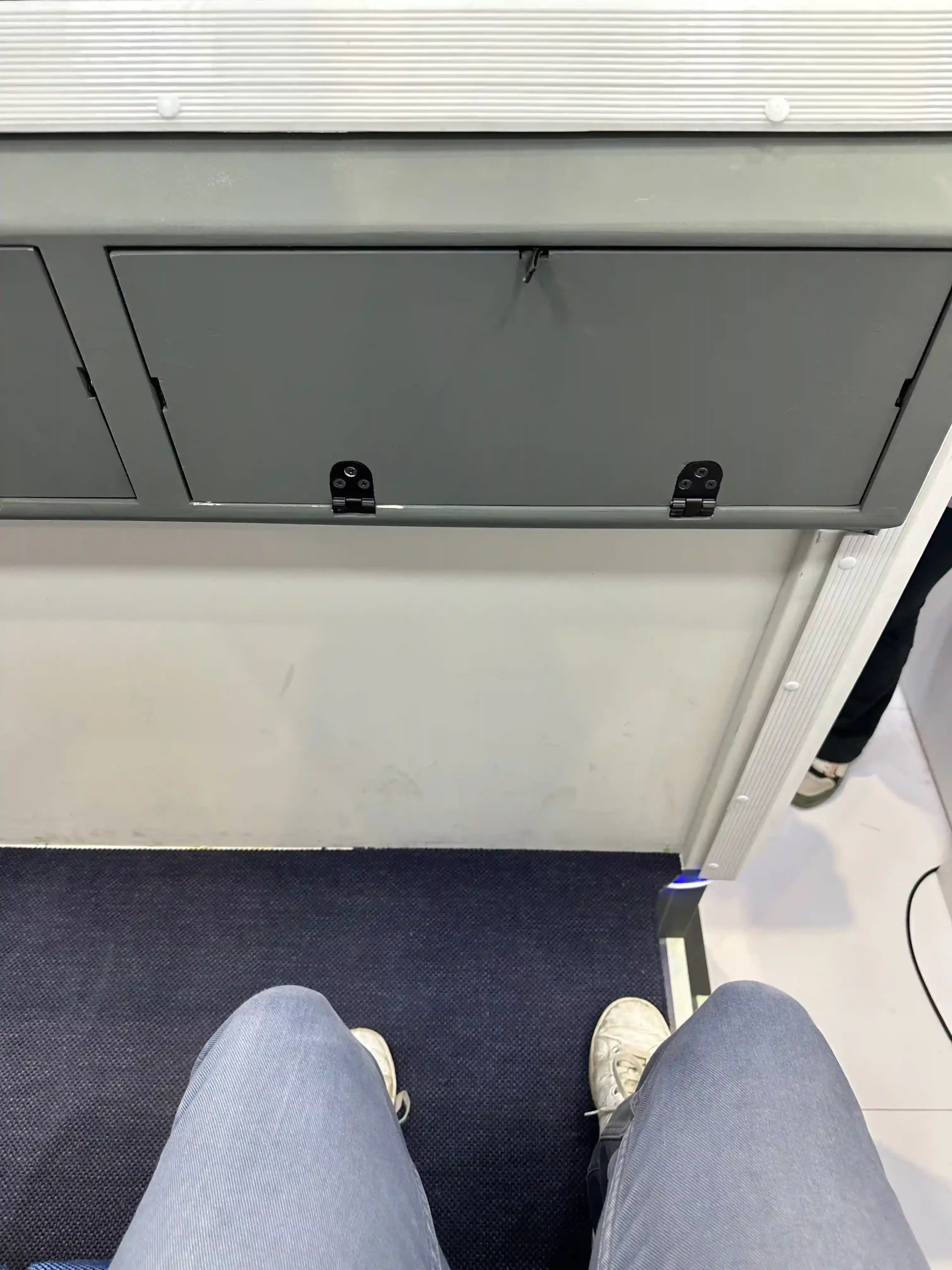
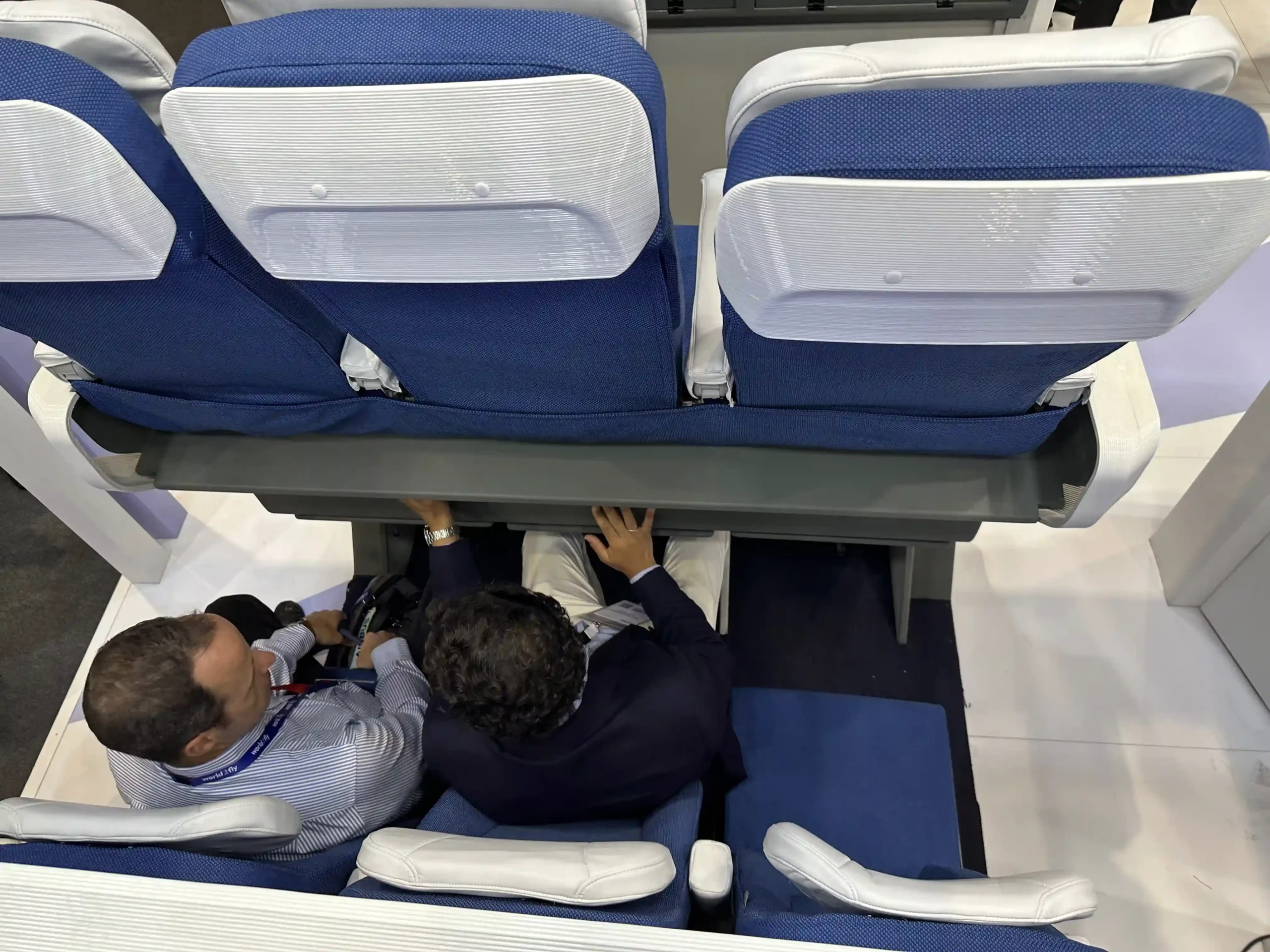
These seats are really, really, really comfortable
The biggest advantage of these seats is, by far, that they’re significantly more comfortable than any economy or premium economy seat I’ve ever sat in. I honestly can’t emphasize enough how much more comfortable these are than regular seats. They recline further and have an enormous amount of legroom because the seat in front and behind are so much further away than in a conventional configuration.
More benefits
I see two more benefits beyond the increased comfort of these seats:
- They’re lighter and more fuel efficient: Since these seats are all essentially part of the same structure, they weigh less than conventional seats. This fact, as well as the weight loss resulting from the lack of overhead bins, leads to substantial weight loss. That translates to per-passenger emissions that are much lower than current numbers.
- They’re more accessible: Lower-level seats can be flipped up due to their lack of legs. That means that these seats are more easily maneuverable for those with diminished mobility than a traditional economy seat. I think this largely offsets the fact that upper-level seats are more difficult to access.
Why people love to hate this seat
I’m not all that surprised by the blowback this concept has gotten: over decades of economy class cutbacks, passengers have been primed to interpret any innovation in economy cabins as detrimental to comfort. So it makes sense that the negative responses we’ve seen stem from the misunderstanding that this concept is yet another in a series of design changes that makes the airline more money at the expense of passengers.
But this is not another instance of Ryanair’s infamous toilet fee idea. In actuality, this design is primarily attractive to airlines because it offers greater passenger comfort while reducing weight. It is, contrary to what some have incorrectly written, no more floorspace-efficient than today’s economy configurations and fits the same number of passengers per square feet current economy class cabins do.
At Chaise Longue’s booth in Hamburg, I was able to chat with interested airline executives. I got the overwhelming sense that their interest in the product stems not from a desire to pack more people into economy class, but rather to create a more comfortable economy class experience without hurting their bottom line.
Crop dusting and other dangers
Common across many of the responses I’ve seen are concerns that passengers in lower seats might be positively bombarded by farts directed downward by gassy upstairs neighbors. Though it’s an amusing concern, from a scientific standpoint there are a couple of reasons not to worry:
- Air pressure and dispersion: Gas released in a fart quickly disperses in all directions due to the air pressure around it. This dispersal would be even quicker in an environment with active air circulation like an airplane cabin. It just wouldn’t move downward in a concentrated enough form to be perceived. Aside from this, farts tend to be warm which means their gasses would likely rise, not fall.
- Air circulation and ventilation: The aircraft cabin environment is engineered for a high degree of air exchange, with powerful ventilation systems designed to maintain good air quality. Airplanes typically have air circulation systems that fully exchange cabin air with fresh air from outside every 2-3 minutes. This high rate of air exchange, combined with HEPA filters that remove 99.97% of particles (including bacteria and viruses) from the recirculated air, ensures that the cabin air remains clean.
Finally, with respect to the dangers of dropping things on passengers in lower levels, it’s worth noting that in the double-decker seat configuration, the upper and lower seats are not directly stacked one above the other. The seats are arranged diagonally, decreasing the likelihood that lower-level passengers will be struck by falling objects (as well as the likelihood of any downward gaseous exchange).
Will this get certified?
When testing a new aircraft, manufacturers must demonstrate to regulators that, among many other things, passengers can evacuate the plane in under 90 seconds. Given that upper-row seating is essentially accessible via a very short ladder, it might be difficult to meet such a stringent requirement.
I’m not as worried about this as some–Air New Zealand managed to have their Skynest seats, which are essentially bunkbeds, certified and those are harder to get in and out of than these. Chaise Longue has actually partnered with SWS Certification, the company that handled Skynest’s safety certification, and generally has a track record of safety certification success.
Additionally, given that this configuration won’t add more passengers to planes, airlines won’t have to worry about adding more flight attendants per FAA regulations. These seats also seem to adhere to the FAA’s emergency landing dynamic conditions, which lay out physical requirements that seats must meet to ensure safe emergency landings.
Drawbacks
For all its benefits, I see two issues with this concept:
- Greedy airlines: My biggest concern with these seats is that there’s nothing theoretically stopping airlines from decreasing the degree of staggering between the top and bottom seats and making everything tighter. Though that intent wasn’t expressed to me by any of the airline executives I spoke to, it would be hard to put the genie back in the bottle if they ultimately go in that direction.
- Less storage for carry-ons: Due to the lack of overhead bins over the middle row, passengers are left with only under-seat storage. That’s a big issue and I don’t know how airlines will resolve this beyond restricting carry-on baggage.
Conclusion
Chaise Longue’s new double-decker seating concept is a great idea, and I genuinely hope it gets to market. The biggest obstacle–bigger than safety certification–will be negative public opinion, which will ultimately inform airlines’ decisions on whether or not to install this product. At the same time, I think these seats are so comfortable that once people try them out public opinion might just turn around.
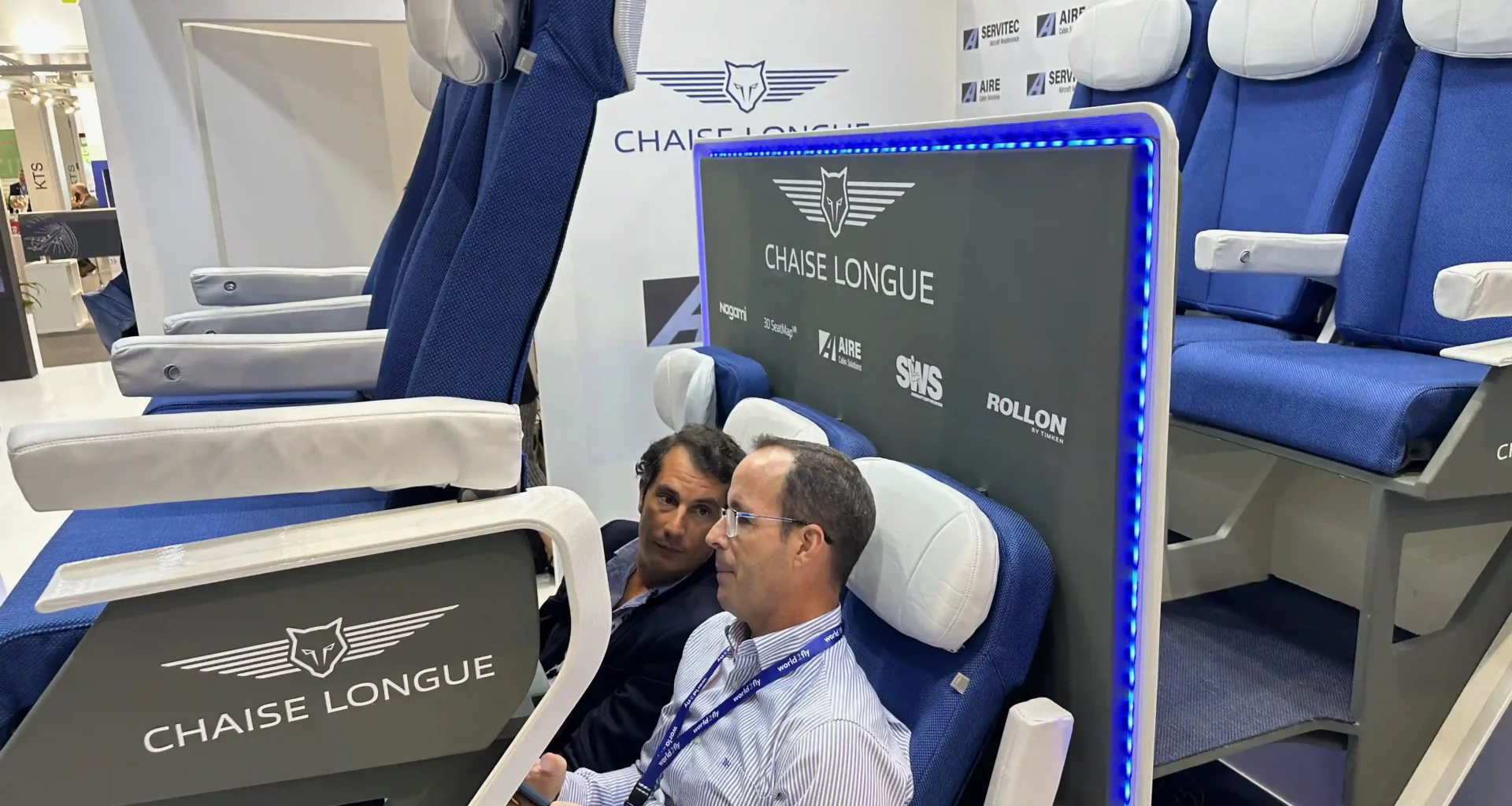
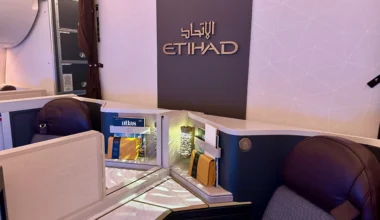



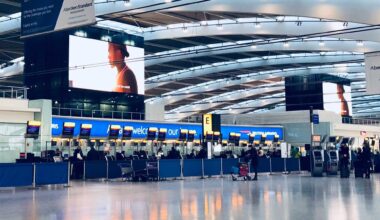
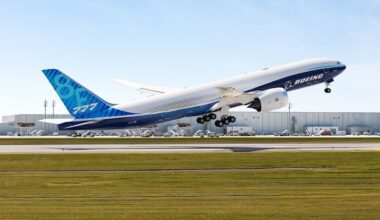
94 comments
As a crew member- how am I supposed to serve those sitting in the top section?
The tray tables for the upper seats were chest level for me (and I’m 5’7″) so I imagine it wouldn’t be too hard to serve for even the shortest cabin crew, though I’m of course just speculating.
How about going to the toilet if you’re on the top row? Do the two others have to climb down every time the ‘window’ passenger needs to go? Or are toilets attached to the seat?
The elephant in the room that no one is talking about! 16 G dynamic testing, as a retired A/C interior designer this smacks of ineptitude. I would like to see them test a seat assembly on the test track and it’s failure. They say it’s lighter? Not after adding all the structure to pass the 16G testing!
Even if they made that top row look comfortable on the mockup model… i will tell you what will happen in real world. After the desicion to use this is made and everybody is excited… the airline execs will add a few little changes…
1) the top row will be moved 20 inches closer to the wall, so impossible to stretch legs, and can not see out of windows… so even more miserable than current planes tight seat arrangememt!
2) The lower level will cost more. The will call it Under-Business and upcharge
3) as overhead bins are eliminated – the will ban carry-on for upper level. And upcharge for check-in luggage.
Have no doubt, those airlines always working on making passenger lives even more miserable
Oh, and moving upper row 20″ closer will also eliminate the extra leg room for the lower level. In the end they will just squeeze much more people into same space, all of which will be much more miserable. And will also eliminate any service, as it’s impossible to service upper row, so why bother
Because in the end airlines do not have a goal of making passengers comfortable. The goal is to put more people into the same plane, no matter how uncomfortable
So if the carry on luggage rack goes where does the cabin emergency oxygen mask system get deployed from? Even if that was somehow rebuilt into the ceiling every second mask is going to need triple the hose length to reach the lower passengers and will be very liable to get tangled when dropped during an emergency. The longer oxygen hoses would also need to be fed from a seperate higher pressure system to ensure both tiers of passengers get the same oxygen flow, creating serious engineering complications and expoentially greater potential for a major systems failure. Don’t think the people who came up with this notion have a clue what they are doing.
Dumb idea – starting and ending with “greedy airlines” drawback…
The same airlines took an airplane that was designed for comfort – the 787 – and shoe-horned another seat into each row of coach to make the plane a flying sardine can in coach.
No thanks – I hope and pray this idea never gets off the drawing board.
I’m concerned about there being no overhead compartments. I always travel with just carry on because of sooooo many experiences with lost or misdirected checked baggage……
Good for cattle and $$ per plane mile flown. Bad for human sitting in claustrophobic lower level.
Idc I’ll be upgraded in biz class 😉
Did anyone read the friggin article? This comment section is ridiculous.. If they are more comfortable with more leg room, and make for a better sleeping situation I’m all for it..
I was also thinking the same, has anyone read the article? SMH
AND there will never be a brat kicking the back of your seat, or some disgusting creep behind you taking off his/her (I’ve had both) shoes and resting his nasty foot on your arm rest, or the girl in front of you who fancies herself a beauty queen, drape her long hair over the back of her seat, dangling over your tray table…
Where do u see extra leg room in upper level? Seat in front of the wall and try to stretch legs under it. You can not. They will charge more for lower level and put upper level passenger in into more crappy position then today. And they will ban carry on too
The point is, if you think the airlines will leave this configuration as is or will they ruin it for more profits. If you think they are concerned with the traveler’s comfort, don’t you think the configuration already would be comfortable?
Great you get to enjoy somebody’s flatulence wonderful, it’s bad enough with people’s body odour on planes
Can’t imagine how disgusting it would be to sit on bottom seats. The dust, hair, crumbs, etc…that would fall from the space between the seat back and bottom part of upper seats onto the trays/food of those in the lower seats?? I’m puking just thinking about it!
Not to mention, the folks in the bottom seats could not bend forward without smacking their heads!
Nope, too ridiculous!!
It’s a welcome development, but my only fear is that less chances of survival will be recorded in case of any air mishap, passengers in the upper deck,will fall over the lower deck thereby limiting survival chances though am not praying for any either.
What about flatulence problems!!
nothing like a fresh fart! right up the nose.
Where would my carry on go?
During an evacuation, with so many people, how is it possible to get everyone out within the allotted time?
Someone will trip and fall during flight/ turbulence
I look at that picture and all I can see really bad turbulence people hitting their heads on the seats above🤕. Also everyone knows that there are some nasty people at can not hold there bodily functions 🤮 What are the airlines thinking 🤔.
The confined space and turbulence on airplanes causes frequent spills of drinks. Can you imagine someone on the upper level spilling a full drink onto the passengers below? Talk about air rage!
It’s not brilliance, it’s stupidity! They contine to think how they can make passengers uncomfortable, charge more money, and tell them it’s comfortable after customers tell them they hate the idea and don’t want it. Ask American Airlines about their Oasis program. I worked for American at it’s Tulsa base in finance. Horrible idea, but they kept spending millions on it.
This is right on the mark…thanks!
Well, sure they might be super comfortable to SIT IN. Take a flight in one and you’re guaranteed to be raving mad in 3 hours. Perhaps the upper row could be configured so their butts aren’t in your faces?
As a tall person, I love these seats! Currently, I cannot fit into coach seats so I must buy a business class ticket, or pay for the ‘premium economy’. Perhaps there is hope that I can sit in regular economy again…..
Just one question: Are you high?
I’m only mildly claustrophobic (and also 6’4″ and 280 lbs, so there’s that) and I feel extremely uncomfortable just looking at the photos. I’ll stick with business class, thank you.
You are absolutely right! Those lower seats look so claustrophobic. No Thanks!!!!
Evacuation looks like it would be an issue.
Ergonomics are just not visible for Flight attendants.
Issues for wheelchair accessible are not visible.
Very insightful. I had no idea business class would be more comfortable than economy class.
#pinkeye
That’s a stupid design and here is why:
1. It will make anyone claustrophobic – one ones without claustrophobia
2. Given an accident the people on the lower seats are at a higher risk of breaking their skull.
3. What if the person on top farts?
What about upper row farts?
Butt-in-Face class now boarding. Just proves a point, things can always get worse.
1. Unless I missed something, there may be more legroom for passengers in lower level but it looks like a wall in front of the passengers in upper level. So upper passengers can’t even attempt to extend their legs under seat in front of them. They’d be kicking passengers below in the head.
2. Aside from hating it as a passenger, I’d pity the Flight Attendants attempting to serve the upper row passengers, not to mention the ergonomic impacts of bending down and reaching up continuously.
3. Then there’s the crew who clean planes. Image their challenges and pain in trying to clean both levels. How well is the upper middle seat actually going to get cleaned?
Also they cite weight reduction from overhead storage elimination… Ahem, that ridiculous lack of logic. You can eliminate overhead right now. No need to mess with seats. Boom! Weight reduced. There is only little problem with storage space eliminated too. So in the end they will ban carry-on. Less comfort for passengers goal achieved!
This author who commented on how comfortable the seats were must clearly have sat for 2 or 3 minutes in the chairs on a “mock up”
of the proposed layout. But, in a hangar or warehouse type building there is no actual sense of how something feels inside of the cigar tube that is a modern airline fuselage.
In Chicago, a few years back, the local transit authority decided to reconfigure some of the passenger rolling stock and sought rider input.
The design company put a mock up of a seating set in the commuter terminal, invited passengers to sit and then to comment. The feedback was reportedly neutral to mildly positive and the reconfiguration commenced. As soon as then new cars were added to the train lines, the customer complaints AND Conductor complaints started to roll in. The seats with a plastic shell and fairly thin padding while pleasing for a 30 second “test sit” turned out to be quite uncomfortable for a 45 minute commute. Additionally the seat units were each a couple of inches wider than the seating that they replaced, causing a loss of ~4 inches of aisle space making moving through the cars with a brief case or a rollerbag very cumbersome. Some disabled passengers were unable to move through the car at all due to the width of their walkers or in some cases electrical scooters. Moral of the story is that while our author means well, he cannot possibly evaluate the comfort for a plane load of passengers on a 3 or 4 hour flight packed in with -0- visibility throughout the cabin and even greater discomfort when trying to get up from ones seat. I predict that if an airline deploys this seating arrangement they’ll need to ground the aircraft after the 1st flight due to extremely uncomfortable passangers complaining. Should an airline be foolhardy enough to reconfigure the entire fleet….short their stock…the place will be out of business due to lack of passenger bookings.
Totally agree that extensive real-world testing needs to be done–and it’s very possible that testing nukes this concept’s chances of making it to market. Having experienced it though (as briefly as that was), there’s something about it that really just works and that makes me hope it becomes a reality.
You agree that real-world testing may nuke this concept. That would happen in the problems listed by David as well as other issues become true. So you agree that these are major issues and yet, you double down and say you hope it becomes a reality? What exactly is the positive about this that is greater than all the issues listed here?
I’m saying that I hope this concept holds up in safety tests because I think it has the potential to increase passenger comfort and decrease fuel burn.
I still think the evacuation problem is going to be a major issue and will ultimately kill this idea. I can’t imagine half the aircraft having to climb down to the aisle and get out in a chaotic fire or crash event. And the lack of overhead carry-on space will be a major convenience and business issue for passengers given that most airlines charge significantly for checked bags.
I knew I’d find you here, Gruber
I would never fly in an airplane with these seats. Really, really bad idea.
Clearly you were smoking something when you wrote this. YES – by all means, make the seats more comfortable. Share your secrets. But no way in hell I would fly a plane configured this way.
My first concern is sitting in the lower deck and having the rear end of the upper deck passenger, and their exhaust in my face. Oh hell naw!
Commercial flying continues to be more miserable each year. From TSA screening to airline food to cramped seating, there is nothing to enjoy. For me a claustrophobic, 6’4″ older guy, coach is terrible and business class is barely tolerable. First class is priced well beyond the benefits. Now, any seat with one-inch extra legroom is labeled a premium seat and charged extra.
If these double-stacked seats were the only seating available, I would drive or swim or stay at home.
Blessings
I would be concerned about someone in the upper seats for this reason. A person is able-bodied and has chosen to sit in an upper seat. They start to take action to use the restroom mid-flight. As they get down, through a simple accidental movement or foot placement, they slip, stumble and wrench their knee or twist an ankle. Now, due to some pain, cannot get back “up” to their assigned seat. Now what do you do?
My question is as someone who gets really freaked out during take off and decent is if it would make it worse being high up like that. I can’t imagine it being better.
You’re missing a very important piece of physics. The seats above will be significantly warmer than the seats below. Managing thermal comfort will be a nightmare with this configuration. Either the bottom people will be freezing or the top people will be cooking. Basic physics, just like your fart analysis, which BTW ignores that the people in the upper seats are going to have a much higher concentration of those noxious human generated fumes as well when they rise to the ceiling. Last but not least, doesn’t this configuration put the upper level’s feet right about nose level for the lower pax? I’ve seen shoes removed many, many times. Way worse then the temporary methane emissions…
Yeah. I wouldn’t even. Because the person in front of you can fart or didn’t wash them themselves. Nasty. Also the ones who ride in bottom deck are more likely to be crushed in a crash as well as ones on top are likely to fly out the plane. I would never ride in a plane like this. Very unsafe. Idc what anyone says. Plus i wouldn’t wanna spend hours smelling the person in front of me. Or them throwing things on me from above or their kid.
If they could make these seats configured as flat beds then I’d be all for them. There’s too many issues to overcome to make this a reality. If your using more space for the seats and eliminating take on luggage you better make it a much better experience. There may be a way to make these works in the long haul flights if you can configure them with flat beds in the 2-4-2 configuration in economy class.
Agreed smelling two day old sweat from a summer region on current airline configuration is far worse than the occasional gas release. Other concerns would definitely be around lack of storage unless some of the cubic space is converted to overhead luggage storage which is far better way to utilise saved space. I will not fly with any airline abuses the additional space.
There looks to be plenty of leg and understorage for the bottom layer. The reclining seems to be less intrusive too. I do wonder about the screens for longer flights, there doesn’t seem to be any. I would like to see the “roof” above the top layer as this might make them seem more tight.
Totally agree–the top level will likely feel less airy and open depending on how far away the ceiling is.
It’s a terrible idea to take away carry-on space for any reason. That space is already at a premium. As a 6’2″ guy id love to see more leg room and recline but as someone who usually travels with just carry-on , I would hate these seats
Absolutely not. Not no way not no how.
The lower is a claustrophobic coffin. No thanks. When we hit turbulance does my forehead just beat off that metal/plastic bar in front of me?
Try again but just NO.
Your head would be no closer to the seat in front than it would be in a normal economy seat!
You do not understand us claustrophobes. Even the normal seats on a plane are too close. With this you will have no sight over the seat in front of you which is way worse.
I don’t know how would I feel about having someone’s butt in my face at eye level uummm no thanks people pass gas on planes sooo yea no thanks lol
I think it is extraordinarily unlikely that these would pass safety testing. The extended lever arm for the upper seats would likely generate too much torque for existing seat rails to withstand.
If it actually yields more comfort I’m for it – subject to it being approved for safety.
As for farting passengers, that is already an occupational hazzard for the frequent flyer. I don’t think this configuration adds or subtracts to the problem. (The average human passes 0.5 to 1.5 litres of gas every 24 hours.)
I laughed at how you devoted 3 paragraphs to it…
I’ll use any excuse I can get to write at length about the gas kinetics of a fart
Safety seems an issue. The air steward can see a lot happening with all passengers from the front but now they will not be able to see anyone until they get to their row. Passengers can’t flag them from afar. If there is a problem it might not be seen until it is too late.
I hadn’t thought about visibility but super valid concern. I’ll reach out and see how they respond.
What if the person above front of you cuts a smelly fart? I know it’s just a silly thought….but what if?????😷
Didnt you read the article
If, and only if, the business/first class get seated in the same way and some practical alternative for overhead bins is found, then it could become acceptable for others. Because questions of safety (head space prevents critical head injuries during turbulence; speed of egress is critical during emergencies) and human dignity (body odour, dust and crumbs from those seated above, inevitable occurrences of entitlement encroaching on basic civic values flowing from MAGA movements) are non-negotiable. Full stop.
No. Just… No.
The train the ANZ bunks got certified is because they are a low density configuration. Evacuation is all about chaos and bodies piling up at obstruction points. There is isle lighting because when smoke fills the cabin you can’t see six inches in front of you. With the added isle disruption and exit row complications, poor cabin crew visibility of seatbelt confirmation, possible messes from spills in upper seats… Not to mention reduced overhead bins (which are ALWAYS full these days anyway)… This will never fly… Figuratively or literally.
So why don’t they put it in a real fuselage cross section? You couldn’t have over head bins with this and exits are a limiting factor. Cute idea by people who apparently have no idea about regulations and reality.
I fly with a toddler several times a year. Do you think these seats are compatible with car seats?
I don’t know for sure, but I doubt the lower level would fit one (I’ll reach out to them to make sure). Fitting one on the upper level shouldn’t be an issue though.
Claustrophobia is real. I would never be able to sit in the bottom, especially in the middle or by the window. No problem with the top. I can see the public also having issues with the lower seats. I can see airlines trying to force people into those seats and people having real panic attacks midair.
This would be me. I would have to stop flying if the seats were like this.
Fair. Though I’m sensitive to confined spaces (though definitely not claustrophobic) and was surprised by how non-confining it felt. The top-level felt way more open and airy than a standard economy seat, though admittedly I didn’t have the top of an airplane fuselage above me. Also, keep in mind that only around a third of the seats on an aircraft would be lower-level, since only the center seats would have the double-decker configuration.
Yeah actual pilots have already commented on needed extra fuel for all the extra weight from passengers this way, not to mention the safety issues of evacuation. And what if you have young kids? Are they lower row only? How about obese people who may not be able to climb “up”
This is a greed grab and nothin more.
The article very clearly states that the configuration doesn’t add seats. So how is this greedy?
If the person in the upper seat farted I would not want to be in a lower seat.
Wasn’t able to tell from the video or photos, but how much do the seats recline? Some of us who have sitting disabilities (it hurts to sit at 90 degrees) who have to fly for emergencies might be in excruciating pain with this design. Thoughts?
I was told that these seats recline 15 degrees. I’ve reached out to figure out what that translates to in inches so will follow up with more!
My concerns are:
1) Speedy evacuation. I understand flight attendants need to empty a plane in 90 seconds. There’s no way that’s happening with this configuration. You will have passengers in the upper seats who shouldn’t be up there (like the people who fly in exit rows who have no intention of helping in an emergency) but are because it’s the only seats available, the upper passengers are climbing down into lower passengers or falling, how do you quickly check to be sure the upper seats are all empty, and it’s just a recipe for chaos and disaster.
2) Claustrophobia. I have it. There’s no way in hell I’d sit in this configuration for more than an hour. People with anxiety, claustrophobia, and other issues would have difficulty with this to the point of not being able to fly whereas they can now. And how do people deal with anxiety and such? – they medicate either with drugs (legal or otherwise) and or booze. Not a great combo for emergencies or conflict free flying.
3) Increase in conflicts. I can definitely see an increase in conflicts with this arrangement. This will get the Karens all worked up, the inebriated passengers will be a challenge to work with in this setting (getting drunk guy down safely), if airlines still refuse to seat families together this is absolutely horrid for parents and the passengers who have to babysit the kids beside them (not to mention if the unthinkable happens) and not to mention the turf wars of luggage and space.
4) Comfort. You say it’s comfortable but did you sit there with several hundred people for 3 hours? Every car is comfortable in the 10 minute test drive and the amenities when pointed out seem fine. But that’s not how this will be used.
5) Airlines. You honestly think airlines would configure in this way? Hell no! They’ll reduce spacing and recline to cram even more people in there. You know them, they’re greedy.
Honestly, if this is the future of flight I’d rather fly like how I take my MRIs – under anesthesia. Just wake me up when we get there.
Good point on number three–I hadn’t thought of that but I can definitely see conflicts being an issue with this configuration
Don’t we already have a solution to this called A380?
Kind of weird how something that looks even more claustrophobia-inducing would also be more roomy and comfortable where it counts but it looks like this could be the case here. And unfortunately, psychology plays a real part in all this and would hate to see this rejected out of hand without even giving it a chance. But you’ve convinced me. I would be all for this, as long as one of your worries didn’t come to pass – that airlines will start with decent spacing, suck everyone in on the idea and then shrink the spacing of everything even more and ratchet up the claustrophobic factor. A very real concern.
It’s counterintuitive for sure–and I think that’s actually gonna be a big problem when it comes to getting folks to actually try it. And totally agree that the real concern here is airlines slowly shrinking these seats until we’ve ended up with an economy class coffin (though simply by virtue of the design, these seats will always have more legroom than conventional ones).
Higher risk of head injury because the seat on top is so close? Less luggage space for carry on?
The seats are staggered so there’s nothing directly above the lower-level passengers’ heads that could fall. Even if someone up top reached behind their headrest to drop something it looks like it would probably land in the lower passenger’s lap rather than on their head.
It’s not about falling. It’s about your head smashing into the seat in front if there is a sudden stop or low speed collision.
There very comfy because maybe they are very padded unlike current seats. Do you think that will really happen if they ever went into production?
The padding on the demo version was actually pretty bad. The reason it was so comfortable was that it was extremely spacious–about as much legroom as a bulkhead and more recline.
It looks like there is legroom on the lower, and recline on the upper deck. Without an overhead or seat in front, the upper will have NO cary-on capacity, even for a laptop.
I sat on both levels and there was significant recline on both believe it or not. Upper level chairs have space under the seat but agree storage will be an issue given no overhead bins.
This is ridiculous. Look at the bottom row. The men’s legs are straight but tilted down to fit under seat in front. That would be so painful on your back and legs. Not to mention getting farts and spillage from above. There will be a clear money grab from airlines if you want the upper seats, which no one will want the bottom. 2023 and can’t come up with anything better??
Just one question… What if the person on top seat farts ! Does the bottom seat person expect compensation for attempt to kill charges